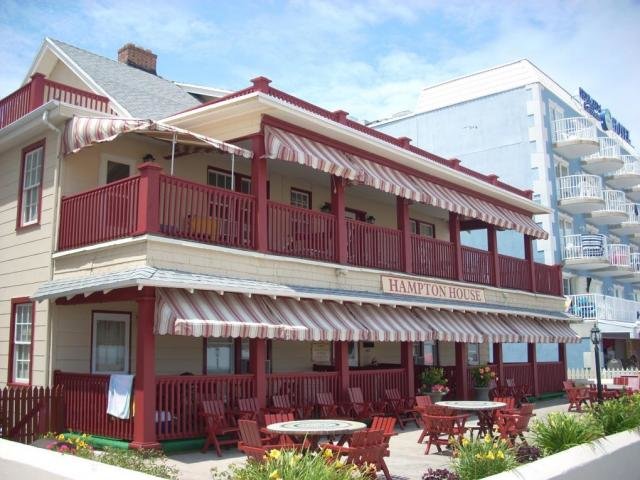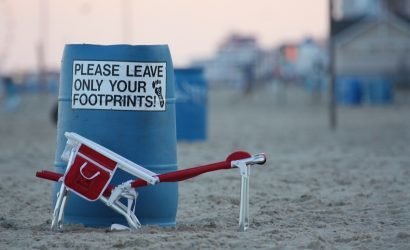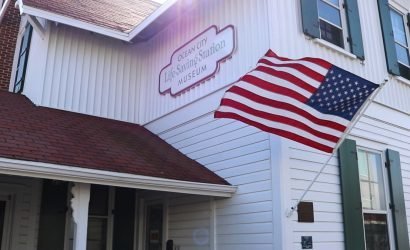It’s been a decade since downtown design guidelines were instituted in Ocean City, and the success of the program is clearly visible with a ride around the historic area.
Ocean City Development Corporation (OCDC) Executive Director Glenn Irwin explained the OCDC and Downtown Design Committee came about in 2000 following a report by the International Waterfront Group in 1999 suggesting a “Downtown Village Overlay District” be created in downtown Ocean City, as well as that area have its own design standards and that economic incentives be offered to encourage compliance and reward projects that meet specific development guidelines.
The first Downtown Design Committee was made up of Chairperson John Trumpower, Tom Davis, Alfred Harrison, Jay Knerr, Jerry Milko, Paul Morris and John Staley. The committee met with Irwin, then-Planning and Community Development Director Jesse Houston and Assistant Planning and Zoning Director Blaine Smith at least once a week for several hours over a year and half to develop the Downtown Design Standards.
“It was real lengthy, it took a long time, we had a really good commitment from the members, and when we went through the public process there was some heated moments,” Irwin said.
Irwin recalled one of the most heated debates was over proposed signage standards.
“You have to remember prior to design standards in downtown Ocean City you could have a sign that was 100 square feet and you could have as many as you wanted on your building,” he said. “We came up with a standard that limited the amount of signage and tried to make the building more prominent then the sign on the building.”
Irwin said prior to the design guidelines there were no standards, as long as the building complied with building and life safety codes the project could look any way the developer wanted.
“We were trying to promote that the building should have some of those architectural elements that are found in old Ocean City buildings,” Irwin said of the direction the committee.
According to the OCDC Downtown Design Guidelines, the standards are intended to guide property owners, builders, engineers, and architects in designing projects that will be compatible with and improve the quality of the existing community.
In November of 2002, the Downtown Design Standards were approved and became city code for all new development and substantial building renovations to follow.
 The design standards do not apply to the facades facing the Boardwalk. Irwin explained properties on the Boardwalk have an entirely different character and the committee did not feel comfortable addressing those design standards.
The design standards do not apply to the facades facing the Boardwalk. Irwin explained properties on the Boardwalk have an entirely different character and the committee did not feel comfortable addressing those design standards.
“It has really helped us a lot, not only reviewing projects but recognizing downtown Ocean City is unique,” Irwin said of the standards. “There is an architectural standard when you think of deep porches on a building, pitched roofs or light colored buildings. Those are all old Ocean City standards and a lot of other places don’t have that same architectural look.”
The guidelines encourage the design elements and architectural characteristics that are associated with the traditional Ocean City style, including simple building masses with gable or hip roofs of varying shapes; generous porches with large-scale columns on first and occasionally second floors; second-floor porches overlooking the street; colonnaded walkways with roof overhangs; large plate-glass storefronts;  decorative railings, trellises and gates; and mostly white painted fences and railings.
decorative railings, trellises and gates; and mostly white painted fences and railings.
 decorative railings, trellises and gates; and mostly white painted fences and railings.
decorative railings, trellises and gates; and mostly white painted fences and railings.
Irwin added the committee believes it’s important to hide the parking and promote the pedestrian nature of the downtown, such as placing the parking behind buildings or screening parking spaces with fencing and landscaping to achieve this goal.
Besides a couple of differences, the committee found the public to be in agreement with the architectural standards as most of the people involved were also interested in keeping the old Ocean City look alive.
“The thing with the design standards is we have as a committee been flexible when we needed to be to make the projects work and come out to be a nice project, not only what we like but the owners like, to benefit the community,” Irwin said.
One of the challenges that has arisen with the standards is to have them codify for taller buildings, such as the eight-story Belmont Towers on Dorchester Street, because such projects go against the old architecture of Ocean City that was only two to three stories tall.
Although the intent of the standards are to encourage old Ocean City architecture, Irwin pressed that the idea is not to replicate the old Ocean City buildings but to emphasize some of the architectural standards of old Ocean City that make it a special and unique place.
“We believe the design standards increase the quality of development projects,” he said.
There have been 25 buildings built under the Downtown Design Standards from the Inlet to 3rd Street over the past 10 years, several projects being significant to the city’s tax base, such as Belmont Towers and the Dough Roller restaurant and Breakers Hotel mixed-use project.
Other attractive projects are the mix-use project, Board’s Edge Villas on Baltimore Ave., a residential project on the north side of 1st Street between Baltimore and Philadelphia Ave and the Seabright Condominiums on Wicomico St.
Following in the Downtown Design Standards footsteps, in 2006 the Upper Downtown Design Standards were implemented.
“We worked on them for about a year or so with the committee, very similar as the downtown design standards but we wanted to separate the two because the area from 3rd Street to 15th Street is more residential in character as opposed to south of 3rd Street is a mix of residential and commercial, and a lot of mixed use but when you look at it there are many similarities of the two districts. We were trying to replicate that old Ocean City cottage look in that district,” Irwin said.
As far as setting design standards past 17th Street, Irwin said it has been discussed but will be another large chunk of time where the resources will need to be evaluated and available, as well as direction needs to be given by the Mayor and City Council.
“Overall, I think it has been a good thing for Ocean City and it fits in well with retaining that old Ocean City character not only through the buildings bur we also emphasize that through our public programs too,” Irwin concluded.
Photos from the OCDC website.
.jpg)
Source: MD Coast Dispatch









